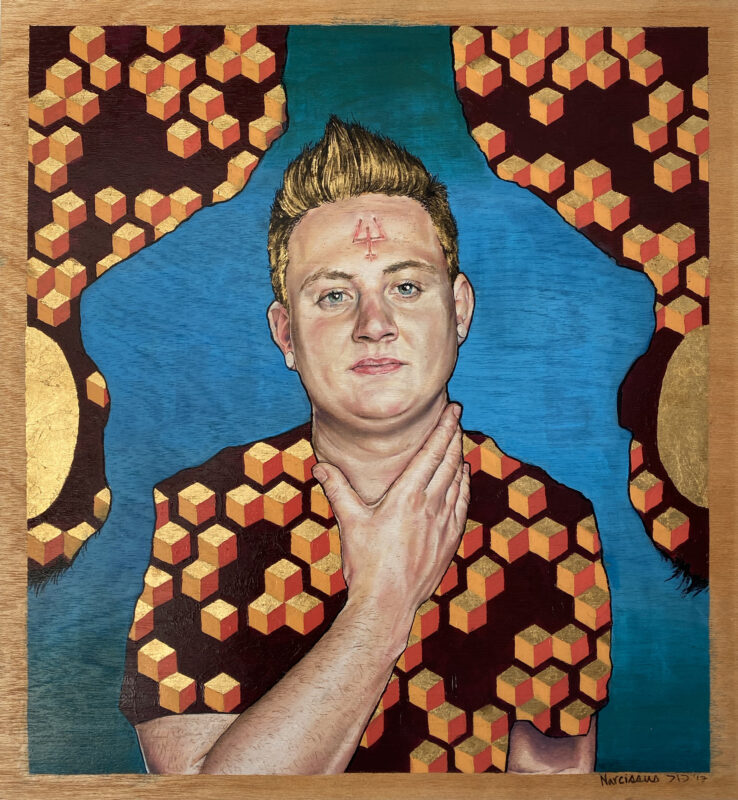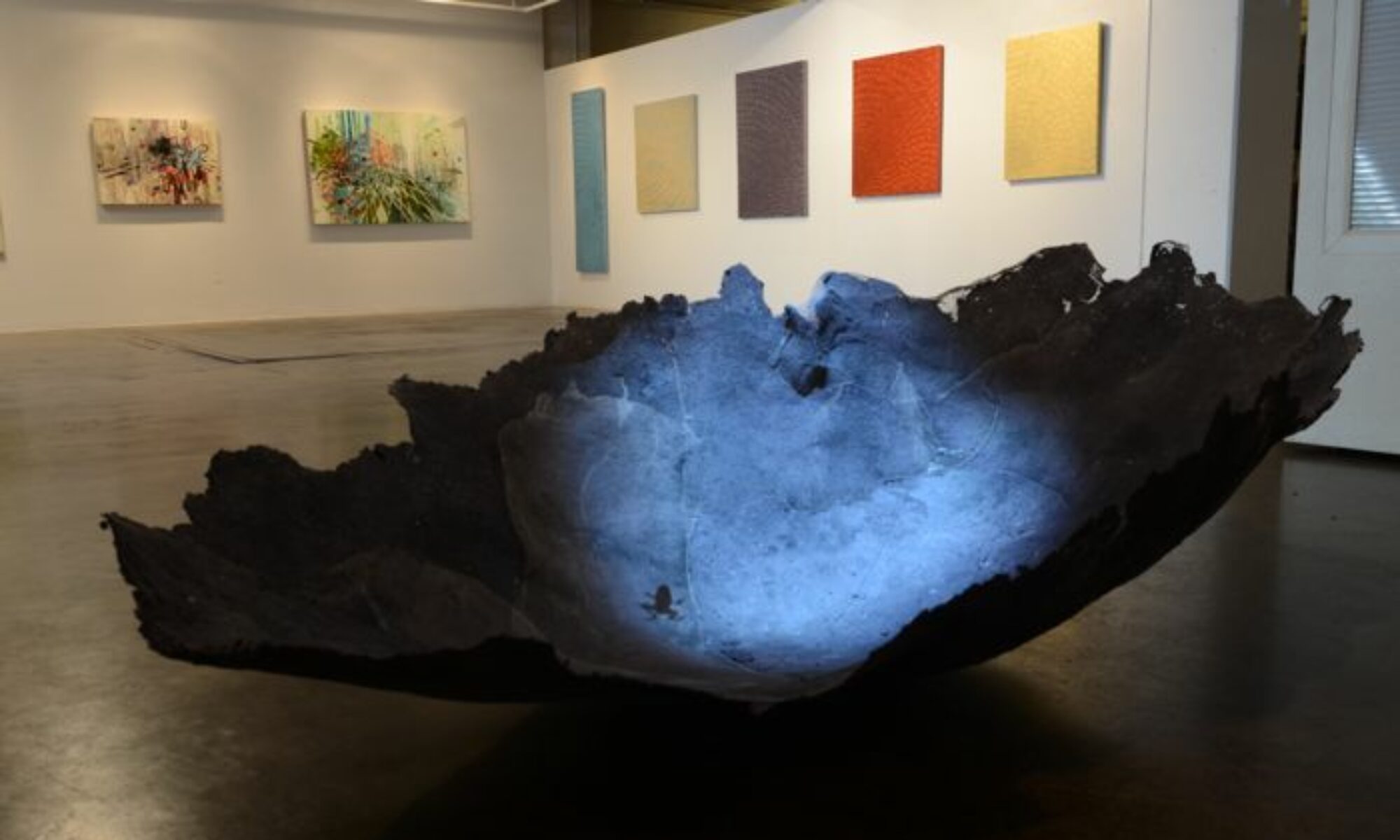Student, Kenneth Iacullo, “Tate,” Colored Pencils and Acrylic on board


Illustration Instructor at CU Denver, Colorado
Student, Kenneth Iacullo, “Tate,” Colored Pencils and Acrylic on board

As long products and services have existed, advertising media has been a part of the landscape. Apothecary shops selling salves and tonics extended the imagery to the outside of buildings. Here in Denver, traces of painted advertisements are faded reminders marking brick buildings. The companies that survived may have understood truth in advertising and the power of building brand legacy. Landscape architects who work with brands, have a unique challenge of understanding the brand, while serving the legacy of the landscape. Today, advertising is no longer a static concept confined to a mark on a building. It’s strength lies in the thoughtfulness of its social agency and a careful approach to the landscape. The brand and landscape are like two distinctive people. What parts of a brand are true to a place?
Flexibility is a good quality for a designer to have. A designer must be willing to crumble up the trace paper and start all over without regret. An open mind is flexible. However, a flexible designer is continually tested in practice. New ideas and suggestions should be auditioned. They are not always worthy of the part.
What is fitting for the experience of place or design? The designer must look to core beliefs and then find flexibility, to test the edge of their limits.
Core Beliefs:
1. State the problem.
2. Conduct primary research.
3. Observe people and the place in situ.
4. How do preferred design situations, factors, forces address the problem?
Every once in a while an art review propels me into thought. Today, The New York Times referred to photographer Robert Adams as “a prophet in the wilderness of modernity.” His photos are often representations of the carcasses of industrial life. In the review, Ken Johnson described Adam’s use of form and metaphor as “economic and Shaker-like.”
It was the title, a reference to a requiem that really got me to slow down and read the review. A requiem is a musical celebration of a soul, not landscape, right? It is written and played to honor life in it’s final act. Not too long ago, I took in a room of Robert Adam’s photographs at the Denver Art Museum. Among other photographs, I remember an old Cottonwood tree. I saw them and walked away, only to be quickly drawn back. I wanted to take a second more contemplative read of how we see landscape. It is a reflection of ourselves.
It might be worth looking at the connections between media darlings who are in essence “spirit animals” for social media followers and the effects on urban landscapes. The New York Times regularly cultivates a following of social media fans. The masses are tuned to a distinct collection of identity-rich images that influence experiences in place. Social media infiltrates the perception of how places perform.
Petroglyphs are pictograms drawn by ancient cultures on the surface of rocks by incising, picking, carving, and abrading. Drawing is about mark making. Right now, I am looking at a rock that is on my shelf. It has particular marks incised on it. They were most likely created by natural causes-rubbing against another rock. Images, drawings and marks can become a part of a visual language for a designer. Particular types of images and marks become “personal petroglyphs” for me. The composition and spaces between the marks is what I find inspiring. Some of my personal petroglyphs are natural things like rocks, that I have traced or drawn. But others are cultural images found in media. I have a visual language book of images that I collect. Another box contains ephemera-printed material from the past. Petroglyphs can become constraints in a design process and relate specifically to a place. I like to hike and look for petroglyphs. This one was found along the highway somewhere near Moab.

In design, it is important to identify what determines fitness. In other words, how well does a project fit to the designer? Designers can be natural problem solvers within a particular project but how good are we at attracting the right mix of projects that reinforces our vision as the designer that we want to be? The difficulty lies with the skills that are associated with designers. Often there is more work out there than we have time to do. We can do many things, and well. So it is important to steer the boat to the right cove. It might require tacking against the current to find the right place. If we know ourselves, and communicate who we are or who we aspire to be to the right audience, then projects will be the right fit. Fashion and design is only in part about style it is about wearing something well. It is about fit. Even the fortune cookie agrees.
Thinking about the poetic transitional beauty of Foxtail Lilies. I had the opportunity to work around some of these at the Denver Botanic Gardens. I love the architectural beauty of their structure as they wave in the wind. In my mind, Sedum Rupestre “Angelina” is a perfect ground cover for underneath. In the fall, the colors in the sedum reflect the earlier transition of the Foxtail Lilies. And then the lilies sport wonderful podlike beads and remain architectural throughout the fall. I may plant some very soon in a contemporary space that I am designing.
Social media sites that track the innovations in technology and practices are a fast-growing network. These sites can be described as ‘finders’ which can also describe the people hired to gather the actual content. They search intensely for inspiration by lurking around creative websites. Creatives are asked sign up and be a part of the design community. In exchange, designers gain connection to the never ending stream of inspirational images. Design creatives might not think about it but these sites watch and lurk. They harvest from the creatives they serve. I am torn about the value of these sites. Recently, I unliked one because an obscure image that I posted showed up for visual consumption on a design website that was my friend. Social media sites inform, connect but unless we are careful in our design processes, social media can play a role in the disservice of design thinking.
As I write this, I am thinking about how to responsibly use media technology in landscape architecture. The appropriateness is a big question in my mind. This morning, one of these websites inspired me to think about material possibilities in a different way. It triggered new thought and possibilites for a project. Searching for moisture sensitive light panels revealed the intense interest cultivated in the last 24 hours among the design harvesting websites. It is everywhere.
I might “like” the various design sites again, or not. I am not sure. In the future, I might think twice before posting a photo, link or something that might be better shared with design friends over drinks. To be aware is more important than to be guarded in design. Being overly guarded closes the door to the potentials of an interesting conversation.
A few days ago, an Algerian middle-distance runner was reinstated after being disqualified from the London Olympics for allegedly not trying hard enough in the 800-meter heats. It appeared to the public the runner didn’t run as hard as he could and interrupted the sequence of expectation. This athlete came to the Olympics and was slated to do well. People like to see effort and good competition, especially in the Olympics. This runner was expected to run a certain way. He was temporarily held accountable for the outcome of his performance. It turns out that he was favoring an injury and was only capable of running less than his best.
It seems to me that there is an expectation for social media to perform a certain way. People contribute content to social media and then expect it to behave a certain way. On some level as humans we feel when we speak, people should listen. We put out. We give and give and give. Humans need to be heard. And then, we want something worthy back. When that something doesn’t live up to our expectations, we are repulsed. We feel distanced from it. Social media brings us close and pushes us away.